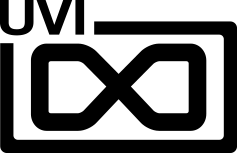
Deep Dive
When Creativity Meets Innovation

UVI has a long history of research and development in effects plugins and virtual instruments. For over 10 years, our development team has worked to offer the most accessible products with cutting-edge audio processing. Let's take a look at how our team has designed some of our flagship products:
Bloom,
Plate,
Sparkverb,
Dual Delay X,
Phasor,
Opal, and
Drum Replacer.
BLOOM - Designing a Reverb that Balances Ease and Versatility
Bloom was born from a simple question: how can we create a reverb that’s both easy to use and highly versatile?
Rise Control at the core of Bloom’s architecture
Cascaded diffusion is known to naturally yield a buildup or rise time as a byproduct, this technique is sometimes employed to create reverse reverb effects. However, used in isolation, for classic room emulation, it is sometimes excessive, unrealistic, or overly metallic.
We made the decision In Bloom to fully embrace those characteristics by making them central to the design (hence the name), and employed techniques to tame excess resonances, allowing the tails to open up and come alive.
We made the decision In Bloom to fully embrace those characteristics by making them central to the design (hence the name), and employed techniques to tame excess resonances, allowing the tails to open up and come alive.
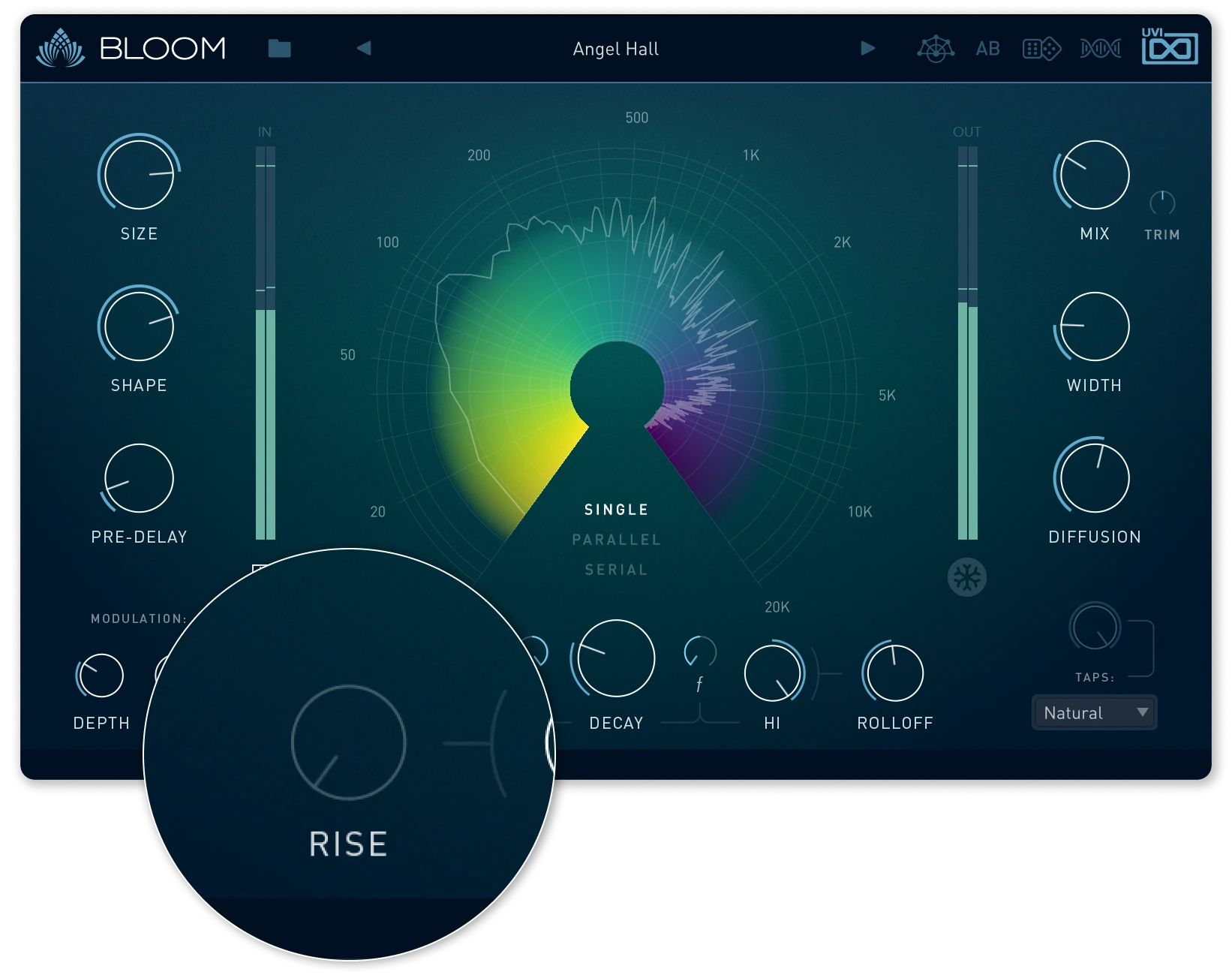
Shaping reverb differently
Given how well ADSR envelopes are understood from their common use in synthesizers, a reverb that utilized attack and decay in its impulse response instead of modulation envelopes seemed like a creative and enjoyable concept to explore. So with the aid of novel signal processing techniques we further developed this concept, incorporating parallel and serial modes to achieve an explicit rise time.
Expanding the sonic palette
The sonic possibilities were then significantly broadened by the addition of tap modes. While realistic small room reproduction was not a primary goal for Bloom, we found that it proved remarkably effective in that area as well, yielding an even greater range of creative applications.
Discover Bloom
PLATE - Making a Creative Reverb with Physical Modeling
One of our main goals for Plate, was to have a fully parametric plate reverb to be used creatively,
by letting people design their own custom plate reverb way beyond what's possible in reality.
Plate employs realtime physical-modeling with up to 20,000 modes to achieve new levels of depth and detail,
going well beyond the limitation of physical units.
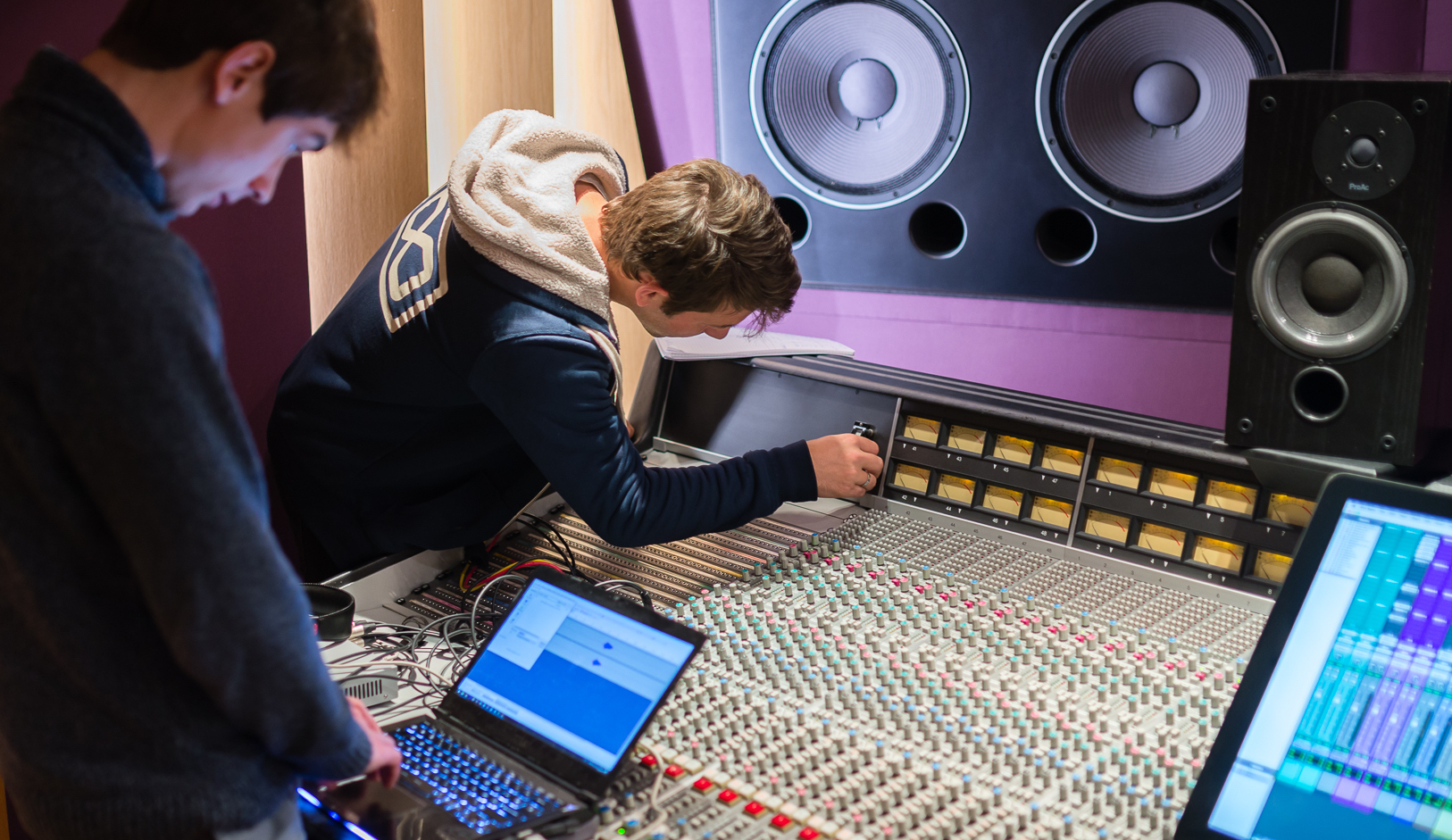
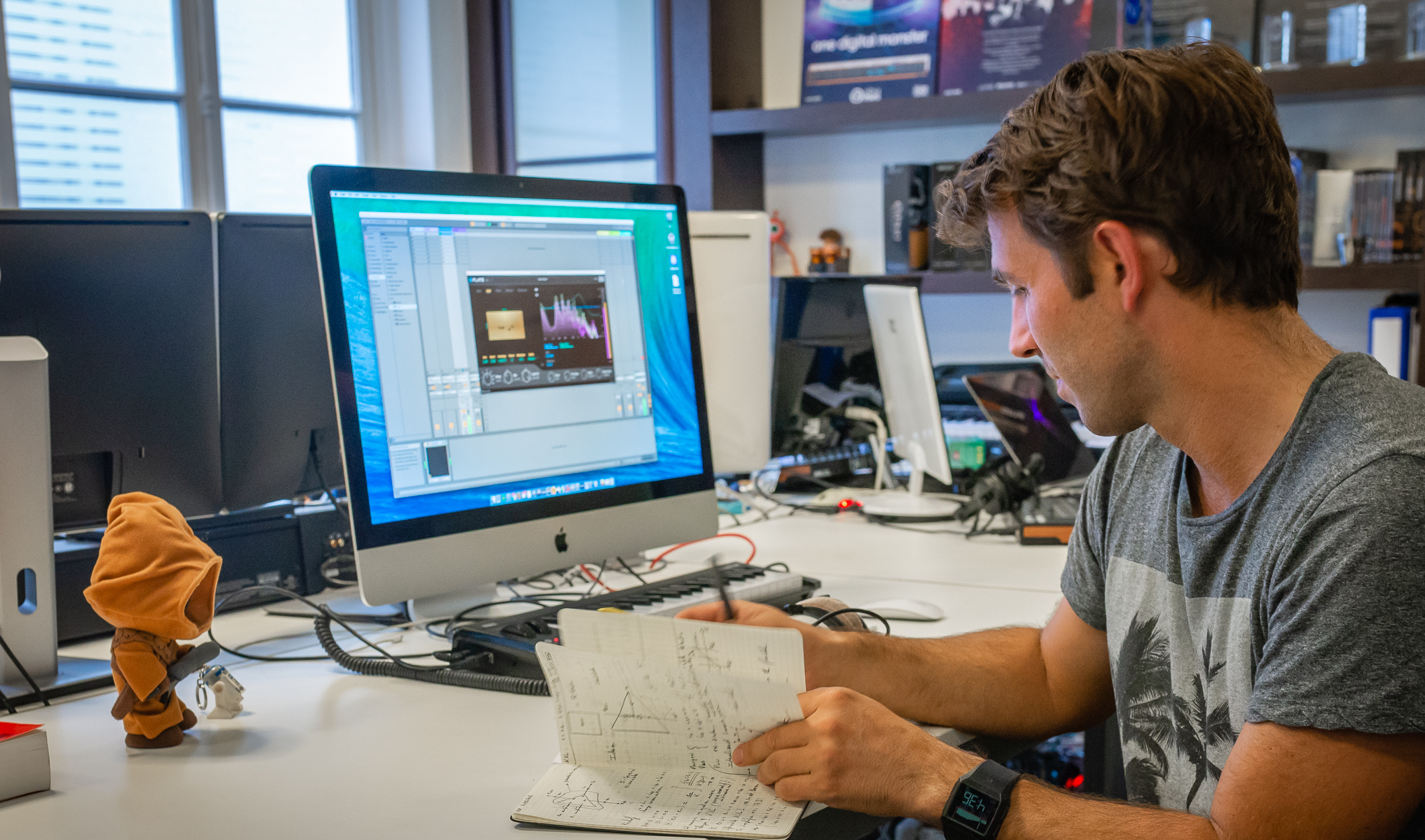
Physical Modeling in Action
The most iconic plate reverb, the EMT140, is a heavy device made of a large sheet of steel measuring 2m x 1m, with fixed transducers attached to the metal, and foam to control the amount of damping.
In contrast, thanks to physical modeling, Plate allows us to change:
In contrast, thanks to physical modeling, Plate allows us to change:
- • Physical dimensions for example a thin and long plate will sound similar to a spring reverb with very dispersive wave propagation of pulses like in railway
- • Material, to change propagation speed and inharmonicity
- • Tension, to control modal frequencies tuning
- • Transducer placement, to change the reverb timbre
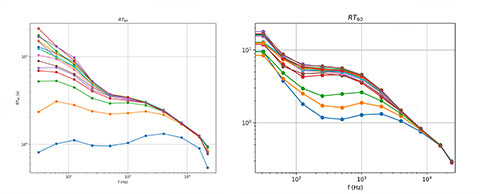
All kinds of damping are based on academic research and physically grounded, but we also made sure that one can play, extrapolate, and mix them intuitively in an easy-to-use interface with just a few clicks.
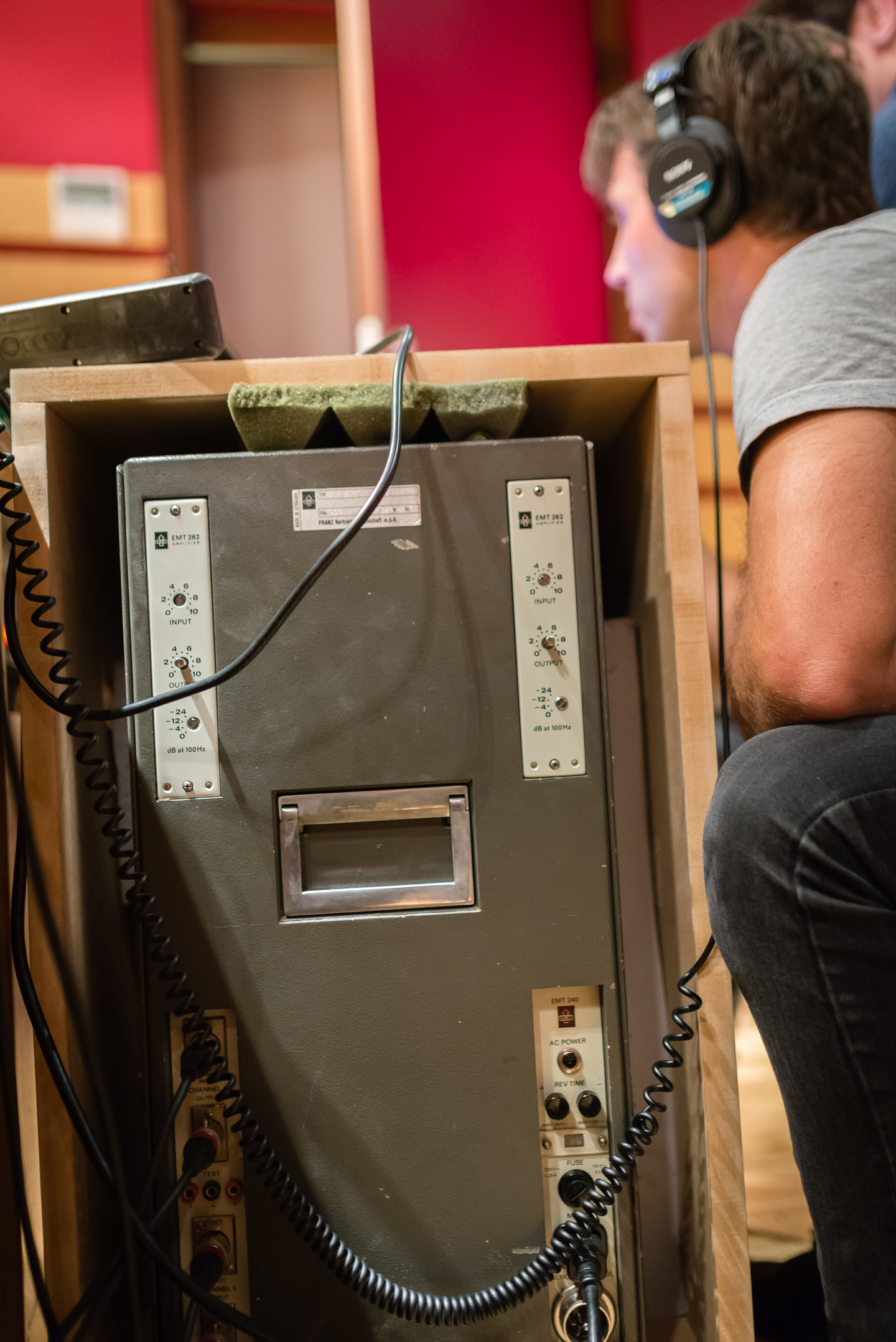
We even included some out-of-this-world features, like mode modulation in order to bring the
lush chorused tails of algorithmic reverbs into the world of physical modeling.
We wanted Plate to be an authentic and accurate emulation. For that purpose, we went to a famous studio in Paris to perform in depth measurements on the well known EMT140 (steel) and EMT240 (gold foil). We then spent time calibrating the physical model to closely match our measurements for all kinds of settings.
SPARKVERB - Elevating Reverb Performance
A quest for excellence
At UVI, the journey of Sparkverb was born from the internal need to create a fast, dense, efficient and
high-quality reverb that passed the synthesizer-test, i.e. excelling with synthetic sounds. Departing
from conventional approaches, we wanted Sparkverb to redefine reverb by offering a parametric design
in order to continuously morph across a spectrum of spaces, from very small to very big, all within a
concise parameter set, instead of having different modes like hall, room, chamber, or plate.
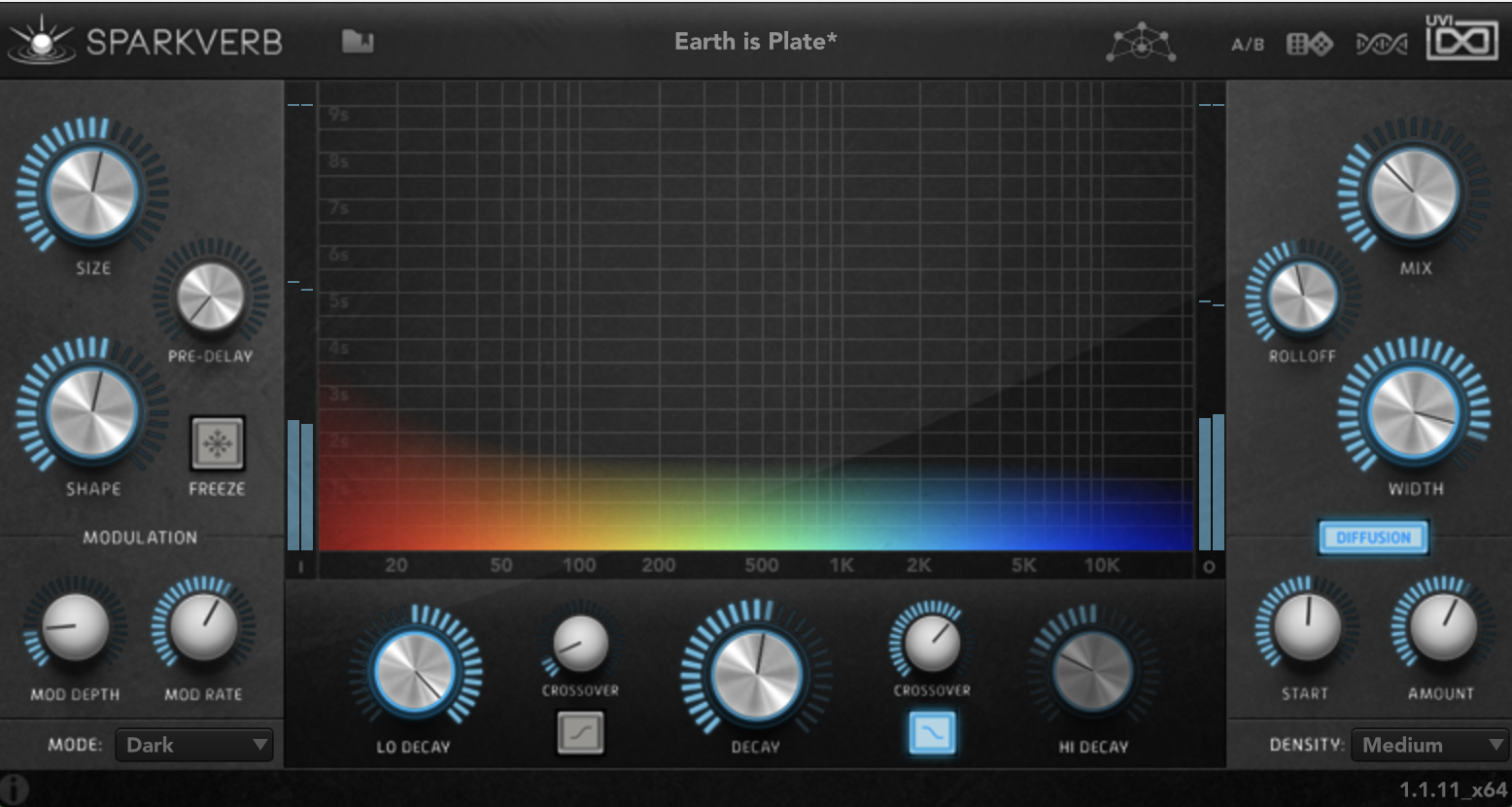
Introducing the preset voyager
The challenge behind the development of Sparkverb was also to demystify reverb preset design, which can
sound like black magic, or a task reserved to physicists for many people. So we pioneered the Preset Voyager
interface. Leveraging machine learning, this interface learns the perceptual distances between factory
presets and maps preset space onto a 2D surface, reflecting their perceptual similarity. Thanks to triangulation,
one can navigate the preset space by continuously interpolating between nearby presets.
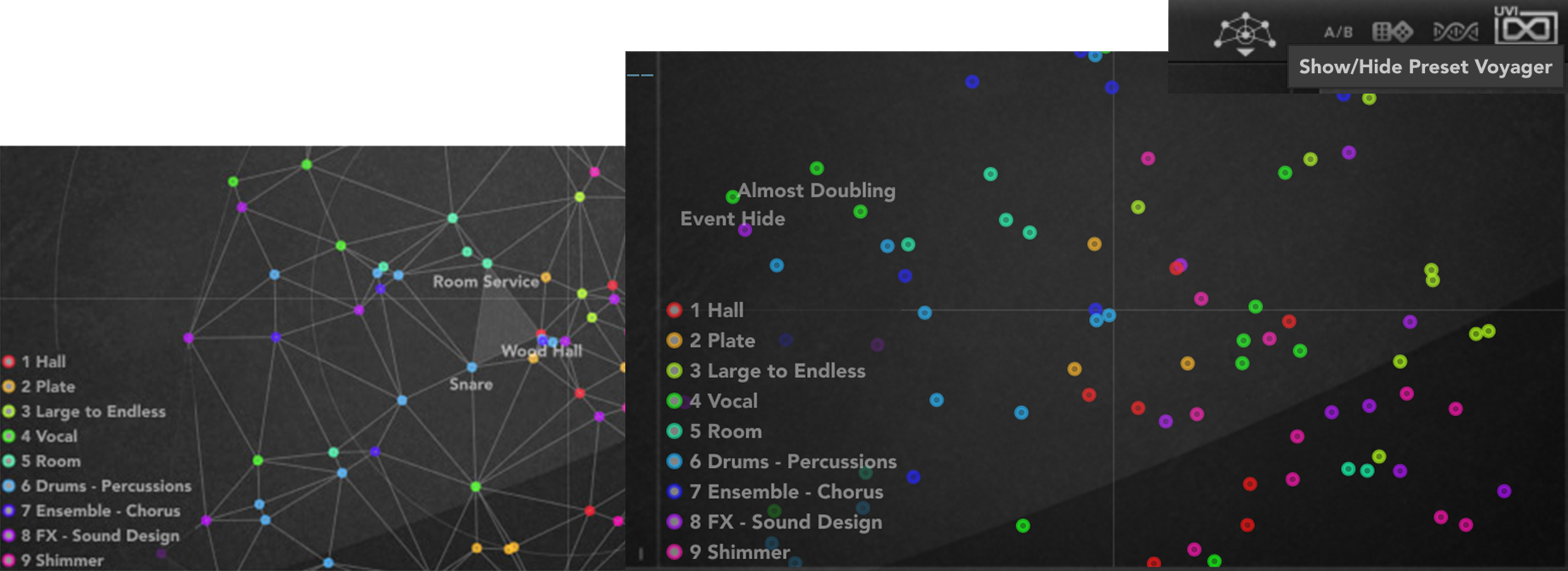
Sculpting the decay curve
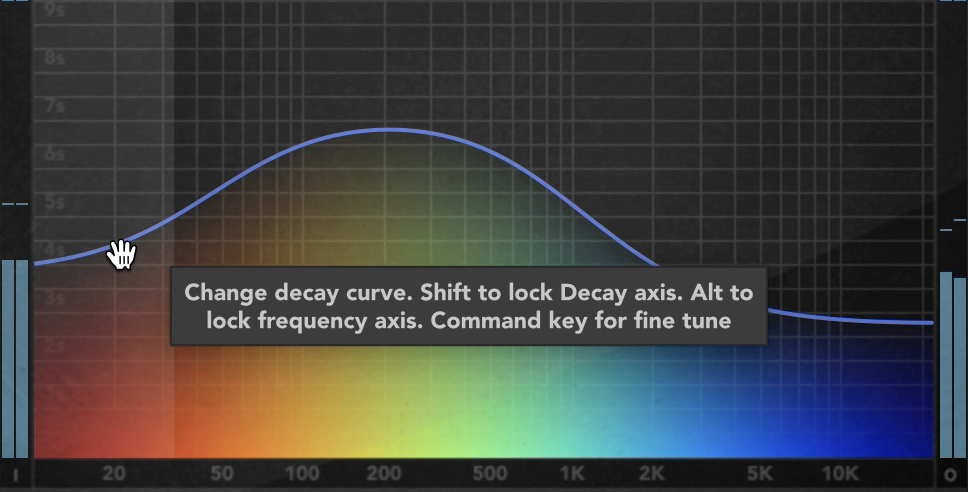
In reverb design, shaping the decay curve is crucial. Sparkverb introduces an innovative graphical interface that empowers users with direct, intuitive and playful visual interaction with the decay curve, transcending traditional knob-based adjustments.
DUAL DELAY - Redefining delay: sonic innovation, simplicity & versatility
When we started the process of designing Dual Delay X, our goal was to explore the sonic possibilities
offered by the design constraint of two delay lines with feedback.
Simplicity and versatility
The foremost objective was to ensure that Dual Delay X remains user-friendly, allowing musicians to
effortlessly reproduce the classic uses of parallel and ping-pong delays with intuitive damping and
feedback parameters. Beyond these foundational use cases, Dual Delay X introduces an innovative feature:
soundfield rotation between each feedback tap.

Unlocking new delay effects
The concept of soundfield rotation opened doors to explore new categories of delay effects:
- • Slow or fast rotating echoes, that allow dynamic echoes without relying on LFO modulation
- • Inharmonic Comb Filtering: that allows users to experiment with unique, inharmonic textures by using shorter delays
- • Scattering when the two delay lines are slightly different
Enhancing the mix
To spice things up, we incorporated additional ingredients to shape the signal path within Dual Delay X
as diffusion, dispersion, degradation and tape saturation.
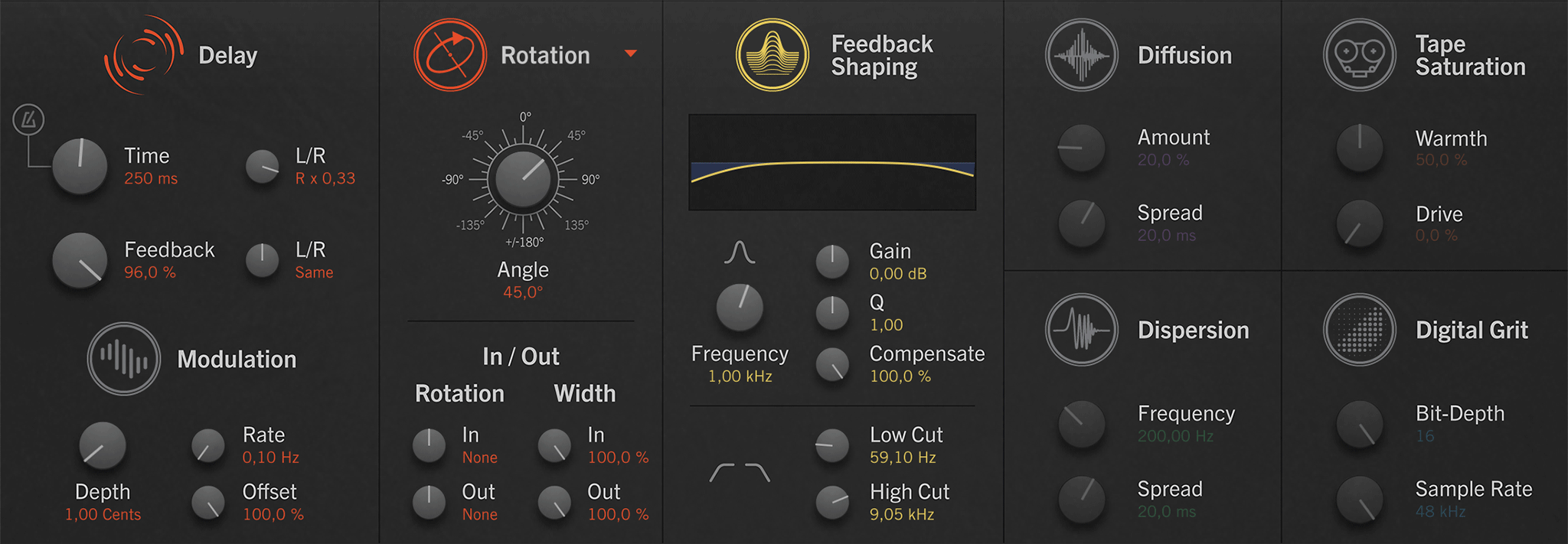
Innovative algorithms for enhanced performance
The integration of these elements required us to create innovative algorithms, particularly for diffusion within the feedback chain, as the traditional ways of adding diffusion tend to accumulate into metallic resonances.
Our dedicated approach ensures that Dual Delay X delivers exceptional performance, with an all-new diffusion algorithm tailored to minimize those when used within a feedback structure.
 Discover Dual Delay X
Discover Dual Delay X
PHASOR - Embracing the Science of Shifters
Explaining the science of shifters
To grasp what Phasor does to your sound, understanding phase shifting is key. Phase in audio refers to a
waveform's position. By delaying the peak of a waveform, a phase shifter effect begins. Shifting the
waveform's phase involves delaying it and then mixing it with the original, creating phase artifacts.
This desynchronization continually generates new phasing effects. Many phase shifters let you adjust
delay length and feedback to enhance the swirling effect. Some also offer filtered phased signals for
greater control over audio artifacts.

The UVI approach
UVI Phasor was first developed as an insert/send effect for Falcon. Running a variety of synths and samples
through Phasor allowed our users to create some really cool tracks, and we quickly received requests to
develop a standalone version of the effect that could be used in any DAW and on any sound source.
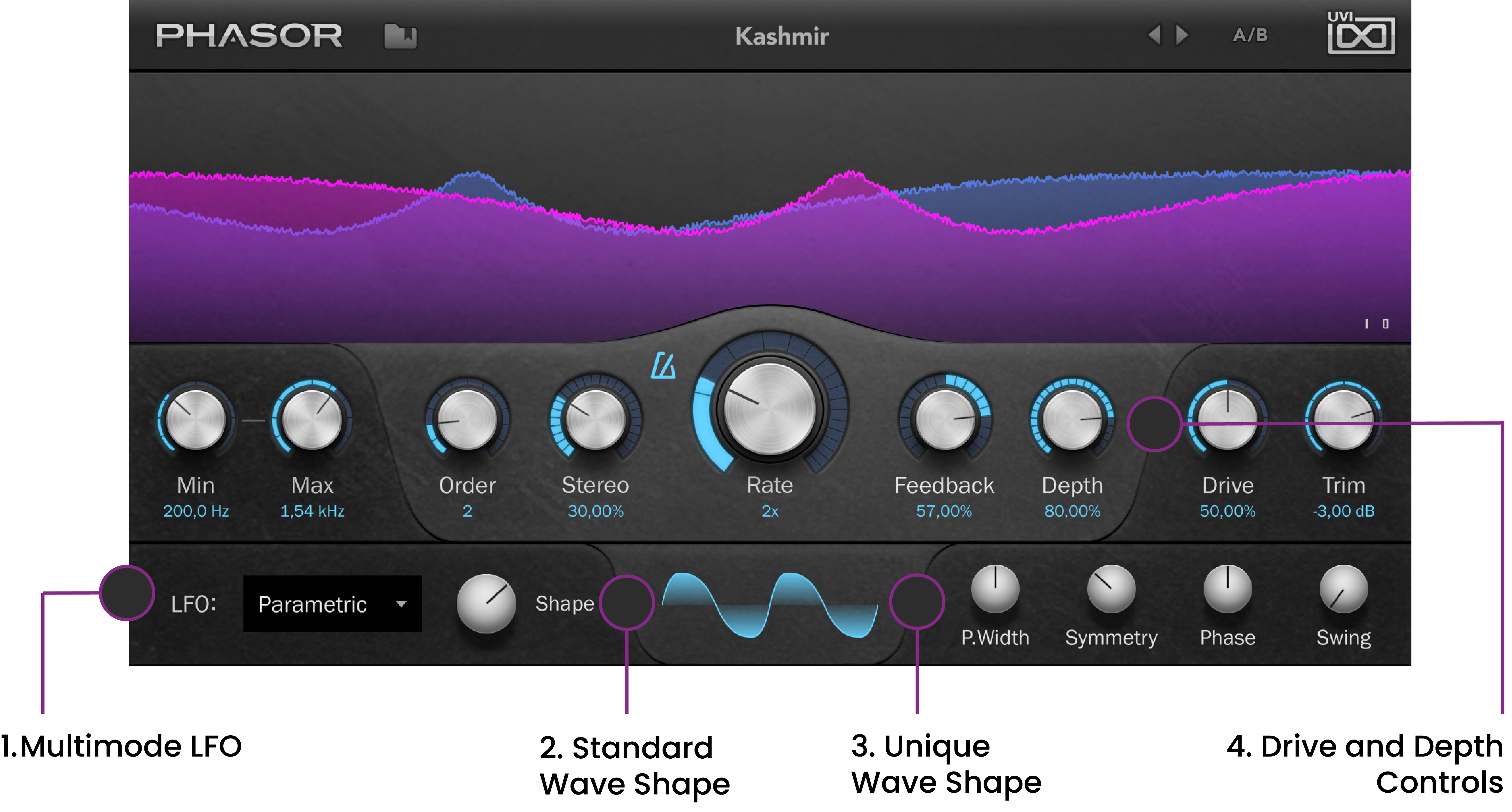
Phasor gives you an incredible amount of control over the phase shifting effects and audio artifacts that
are produced. The engine itself is the timeless phaser engine that users of phase shift effects have come
to know and love. It’s in the control and extra features, however, that Phasor really sets itself apart and shines.
The visual design of Phasor also allows you to have a real guide to how the controls you are adjusting will affect the sound. All of these controls and visual elements combine to allow the user to shape Phasor to the perfect settings in record time.
Discover Phasor
The visual design of Phasor also allows you to have a real guide to how the controls you are adjusting will affect the sound. All of these controls and visual elements combine to allow the user to shape Phasor to the perfect settings in record time.
OPAL - Capturing the Essence of Optical Compression
Opal is our brand-new optical program-adaptive leveler, designed to emulate a beloved vintage optical
compressor from the ‘60s. We spent more than a year on research and development to create an emulation
based on a physical model of the original circuit design. Opal reproduces the inherent program-dependent
response times and nonlinearities which contribute to this famous compressor’s sonic signature.

The circuit
The circuit schematic was thoroughly analyzed stage-by-stage, including: gain reduction, sidechain and
make-up circuit. As it contains about 40 electronic components, a brute force simulation would be too
CPU-intensive for real-time use. Fortunately, some simplifications were possible without affecting the
overall sound. In particular, we found we could differentiate between actual features of the circuit,
and what mostly reflects hardware design constraints of the time, which we could then work around in a
virtual analog model. Some stages were decoupled, some components were lumped together, and some
components were forwent altogether.
The measurements
Next we performed measurements on several optical compressors to extract the characteristics of their
optical cells, namely the photoresistor’s internal dynamics, and the law for the optical coupling
between the photoresistor and the light-emitting element. As these were real machines used in real
studios, the measurements had to be as non-intrusive as possible, meaning no circuit dismantling to
measure components in isolation. Knowing the rest of the circuit’s electronics already, we could do
some reverse engineering and estimate our model’s parameters for the optical cell with a bit of
machine learning, based on these measurements.
The integration
For the simulation itself, we applied some reduction and pre-resolution techniques, and were able to reduce
the model to 2 x 4th order systems (out of 40 components to begin with). The solver was also specially
designed to be computationally efficient. Finally, we added modern features including external sidechain,
variable responsiveness, frequency response correction, and tube drive, to create our own innovative
physical model.
Discover Opal
DRUM REPLACER - Revolutionizing Drum Replacement with Advanced Signal Processing
For Drum Replacer, we wanted to create a drum replacement tool, simple on the surface and easy to use,
keeping the well established metaphor of level-based trigger detection. But under the hood, we spent
time on a number of advanced signal cleaning and pre-processing methods, such as source separation and
machine-learning methods to simplify the detection task.
Transience-based gating
Transience-based signal gating, while rather simple to use, can provide a considerable amount of track cleaning
– it only lets transients pass through the detection module in a level-independent way, compared to traditional
gating where setting a threshold is always governed by a compromise between missed events and false triggers.
With Level-independent transience gating even weak events close in level to background noise can be isolated
and detected.
Drum source separation
Our rationale regarding drum source separation was as follows: rather than training an average model
on big datasets, we decided to use the most available information with local ad hoc drum models tailored
to each specific drum recording situation. In most multi-mic drum set recordings there is a dominant
drum kit element per microphone, sometimes polluted by bleed from other drumset elements. Using blind
source separation methods, it is then possible to learn ad hoc models of the dominant drum layers, and
then isolate and resynthesize only the main drum element we are interested in, simply by listening and
toggling the different components.
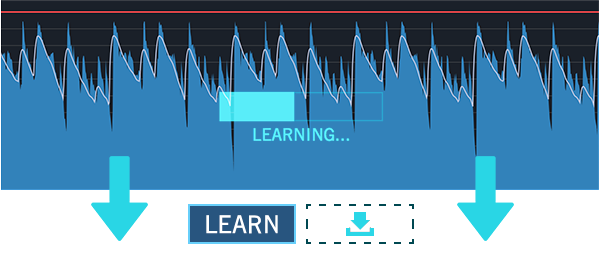

Since signal is additively resynthesized in a constructivist manner, background bleed elements
(e.g. hi-hats on a kick drum track) or noise can be efficiently removed. Combining these tools, borrowed
from academia, provides a way to address difficult use cases by making the most of the available
information about the problem at hand.
Discover Drum Replacer
UVI Focus
- UVI Focus - Creating Immersive Experiences: The Power of Post Production and Foley Sound Design
- UVI Focus - Behind the Sound: The approach powering SonicBundle
- UVI Focus - In conversation with Tonnerre
- UVI Focus - Discover 5 reasons why you need Mosaiq
- UVI Focus - A look at our most celebrated products
- UVI Focus - Rediscover iconic sounds with Doctor Mix
- UVI Focus - Throwback 2024, a year of releases
- UVI Focus - The Art of Tape: Tape Suite and the Revival of analog Techniques
- UVI Focus - Exploring the legends behind Quadra Modular
- UVI Focus - When Creativity Meets Innovation
- UVI Focus - Key Suite's 5 Rare & Unconventional Machines
- UVI Focus - In Conversation with Jean-Claude Chapuis
- UVI Focus - In Conversation With Venus Theory
- UVI Focus - HX-20: Reviving the MS-20 inspiration in 5 timeless tracks
- UVI Focus - In Conversation With Jon Carin
- UVI Focus - 2023 Throwback - A year of inspiration
- UVI Focus - 10 Falcon Power-Features You Should Know
- UVI Focus - Soul Bass & Soul Drums: A Dynamic Duo
- UVI Focus - Synth Anthology 4 - Experiencing Sound Design with MPE
- UVI Focus - The story of KAWAI
- UVI Focus - In Conversation With Antoine Martin
- UVI Focus - Advanced Sound Design Techniques with Falcon Expansions
- UVI Focus - Phasor: The Story of a Mythical Effect
- UVI Focus - 5 Key Features of Percussion Factory
- UVI Focus - The story of Vintage Vault 4
- UVI Focus - In Conversation With Lou Wiss
- UVI Focus - 7 Hidden Gems of Toy Suite
- UVI Focus - PX Guitar Syn, A Piece of Hybrid-Instrument History
- UVI Focus - In conversation with Jordan Rudess
- UVI Focus - IRCAM & UVI, a successful pair
- UVI Focus - Behind-the-scenes of Soul Drums
- UVI Focus - Deep Dive into Synth Anthology 4's modular rarities
- UVI Focus - Deep dive in Falcon's 'Texture' Oscillator
- UVI Focus - In conversation with Simon Stockhausen
- UVI Focus - Deep dive in World Suite 2's Oriental Ensemble
- UVI Focus - Exploring Key Suite Bundle Edition
- UVI Focus - Behind-the-scenes of Walker 2
- UVI Focus - In action with Dual Delay X
- UVI Focus - In action with Shade
- UVI Focus - In conversation with Guillaume Roussel
- UVI Focus - Behind-the-scenes of Augmented Orchestra
- UVI Focus - Behind-the-scenes of UVI
